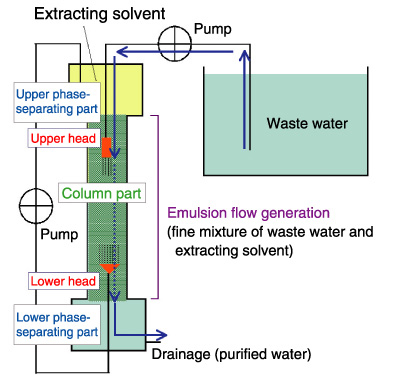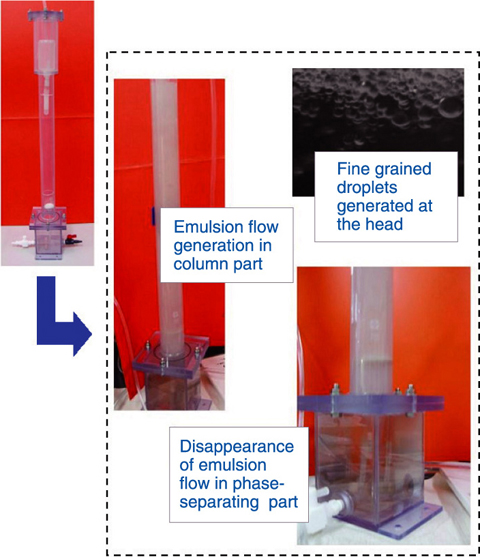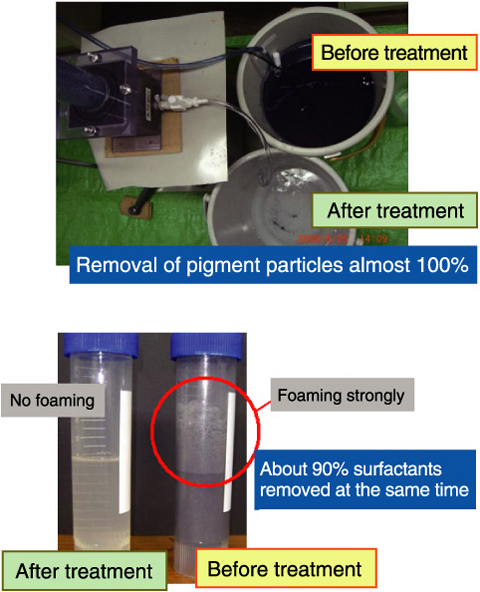
Fig.8-18 Overview of emulsion flow method

Fig.8-19 Aspects of the emulsion flow apparatus and the apparatus in use

Fig.8-20 Example of particulate component removal

Fig.8-21 Example of purifying a paint waste solution
Emulsion flow is a new technology that permits low-cost, easy, and rapid recovery or removal of both dissolved and particulate components in water using a simple and compact apparatus and an organic solvent immiscible in water, such as paraffin. In emulsion flow, dissolved components such as metal ions are recovered by liquid-liquid extraction (solvent extraction) and particulate components such as suspended matter are removed by liquid-liquid interfacial aggregation. Both of these components can be recovered (or removed) at the same time.
Liquid-liquid extraction is a method for extracting a target component from an aqueous solution into an organic solvent immiscible in water, which is very popular in industry. In liquid-liquid extraction using an emulsion flow apparatus, the flow of an emulsion, which is a fine mixture of aqueous and organic phases, arises in a column part by generation of fine-grained liquid droplets at a head, and the emulsion then promptly disappears by itself when it reaches a phase-separating part (Fig.8-18 and Fig.8-19). In other words, aqueous and organic phases can be effectively mixed and emulsified by only sending liquid. Therefore, the emulsion flow is markedly low-cost and simple compared with conventional apparatuses (mixer-settler, etc.). In addition, phase separation promoted by a change in the flow rate enables a rapid treatment with a compact apparatus.
Emulsion flow was developed to be used in the treatment of radioactive waste solutions produced in the decommissioning of nuclear facilities and equipment, and has achieved remarkable progress toward practical use. Recently, emulsion flow has received much attention not only in the nuclear field but also many other industrial fields as a simple and low-cost new technology to purify drainage water and to collect rare metals from industrial waste water.
The emulsion flow method is also used for collecting particulate components like suspended matter. Fig.8-20 shows that a suspending solution polluted with Fe2O3 as a particulate component is purified by shaking with kerosene, i.e., Fe2O3 is accumulated at the water/oil interface. By doing this in an emulsion flow manner, particulate components in water can be removed effectively without any filter or flocculant. We show an instance of applying the emulsion flow to purifying a waste water containing automotive aqueous paint in Fig.8-21. The pigment particles can be removed almost completely (about 100%) from the waste water (upper part of Fig.8-21). At the same time, about 90% of surfactants dissolved in the waste water can also be removed. Before the emulsion flow treatment, there was intense foaming in waste water because such surfactants are like soaps. In contrast, after the treatment, no foaming is seen (lower part of Fig.8-21). This is evidence of the removal of the surfactants from the waste water.
<Previous: 8-7 | Next: 9 Nuclear Hydrogen and Heat Application Research >